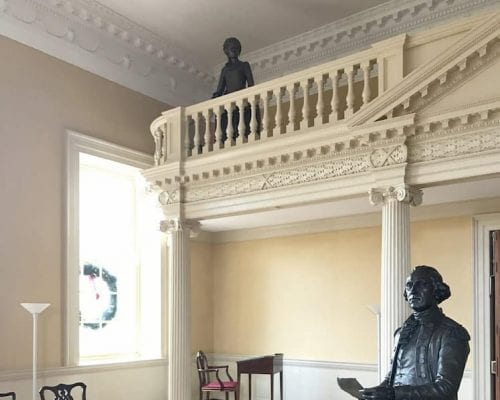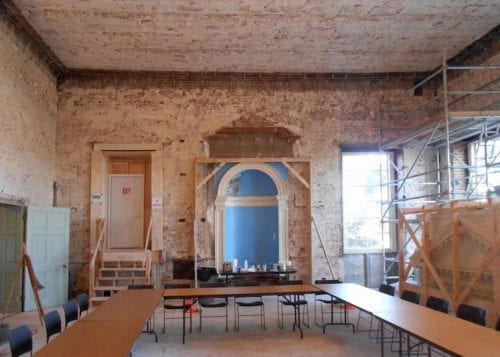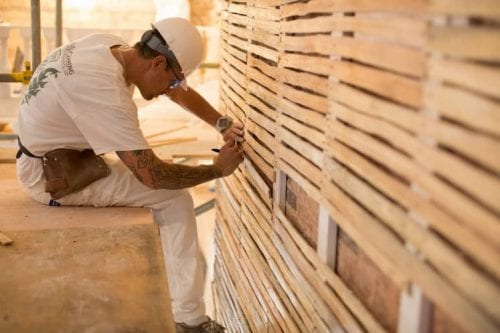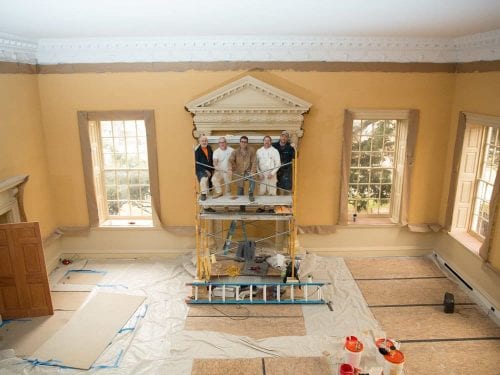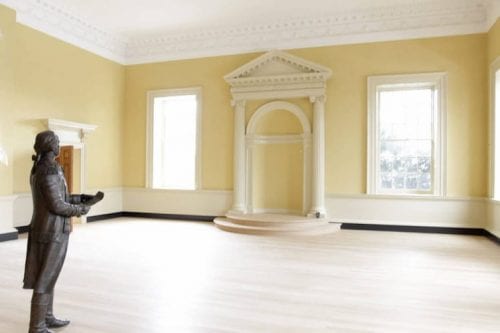Old Senate Chamber, Maryland Statehouse
John Canning & Co. restored the 1700s plaster walls and ornament in Maryland's Old Senate Chamber using the original methods and materials of the time – lime plaster applied to hand-split wood lath for the walls coated with distemper paint so as to remain porous for curing that can take as much as a year, and linseed oil paint on woodwork.
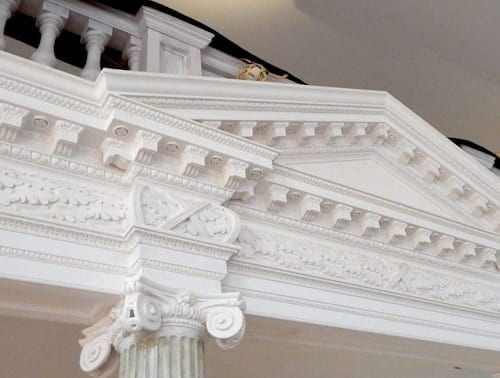
BUILDING FACTS
Location: Annapolis, MD
Built: 1772
Original Architect: Joseph Horatio
Style: Georgian
Status: National Landmark
SCOPE
- Historic Paint Analysis
- Plaster Conditions Analysis
- Restoration & Conservation
- Lime Plaster
- Limewash
- Distemper Paint
- Color Matching
- Linseed Oil Paint
The structure dates back to the mid-1700s, with a history that names it as the site of George Washington’s resignation as Continental Commander. Three weeks later, the Revolutionary War was officially ended with the signing of the Treaty of Paris.
The task for John Canning & Co. was to return the Chamber to the original 1700s design using original methods and materials including limewash for the ceiling, linseed oil paint for the woodwork, distemper paint for the walls, and hand-split lath for the plaster repair.
Traditional lime plaster is whiter, stronger, and more durable than gypsum plaster which came into use in the 1800s and is still used today. The cure-time for lime plaster can be months or as much as a year during which time it must be kept hydrated.
RELATED ARTICLES
6 Common Historic Periods: Styles & Colors
Maryland Old Senate Chamber Restoration

